There are three different areas of the property where I put my hummingbird feeders out. The old feeders I used in these areas were getting cracked and leaking, so I bought three new ones. The first feeder I bought is called the Droll Yankees Easy View Hummingbird Feeder. This is a tough plastic feeder that can be attached to a window with really strong suction cups. It holds 6 oz. of nectar, with two ports, and is easy to refill. I haven’t had any problems with insects getting inside. It comes with a small cleaning brush and is really easy to keep clean. The hummingbirds really seem to enjoy the ability to perch on the feeder and easily drink from it.
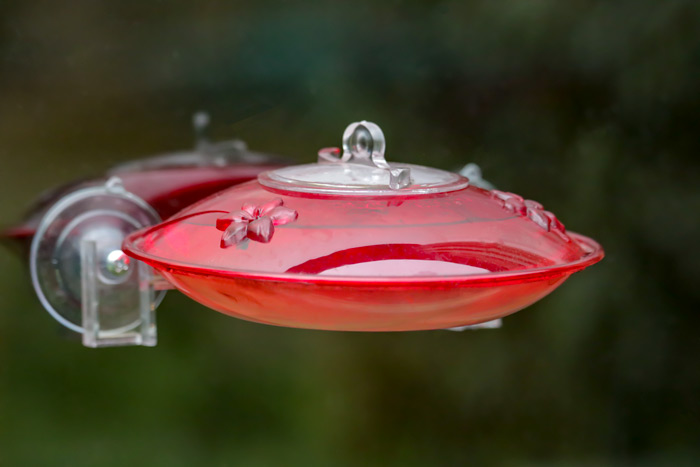
A view of the Droll Yankee Hummingbird Feeder from outdoors.
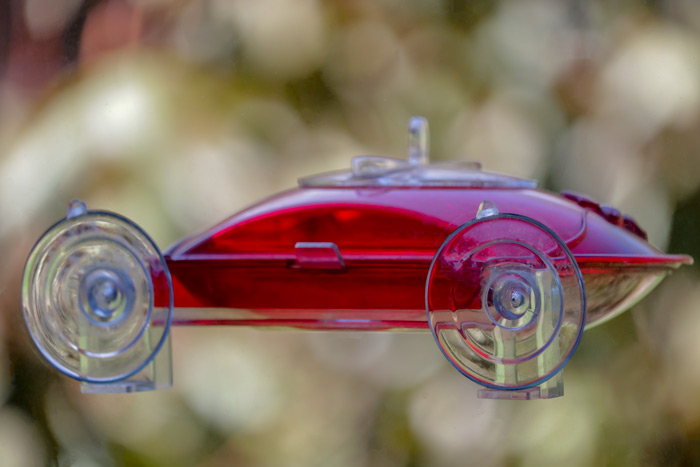
A view of the Droll Yankee Hummingbird Feeder from inside.
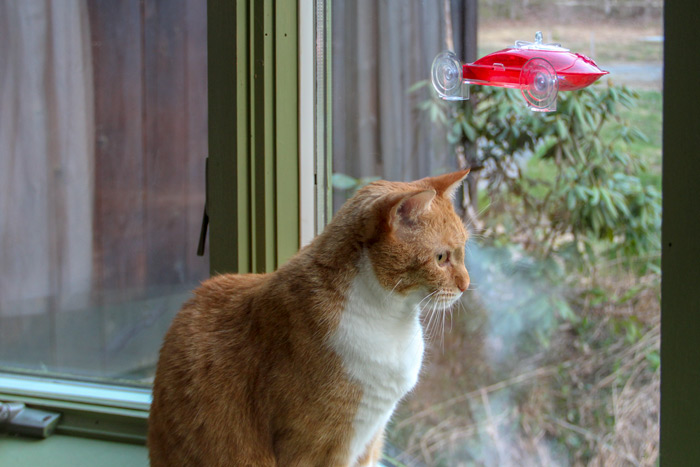
Here is my little helper waiting for the hummingbirds to arrive.
I also bought two hanging-style feeders. This type is called the Pennington 16 oz. Glass Hummingbird Feeder. These feeders are also easy to take apart for cleaning and are dishwasher safe. This feeder is also easy to fill and I haven’t had any problems with insects getting inside as well.
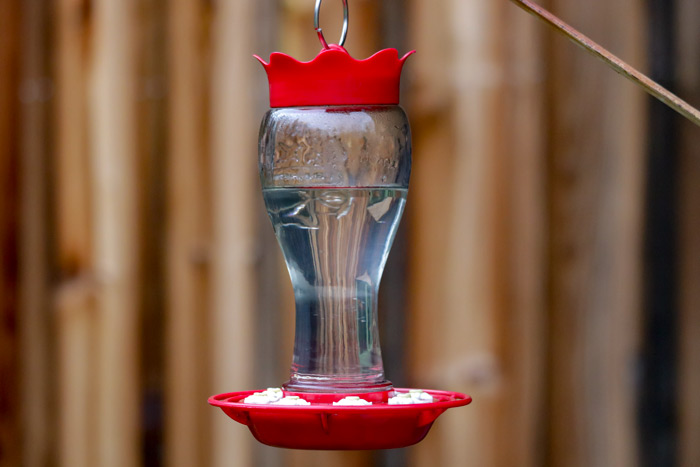
A Pennington Glass Hummingbird Feeder hanging in the front yard.
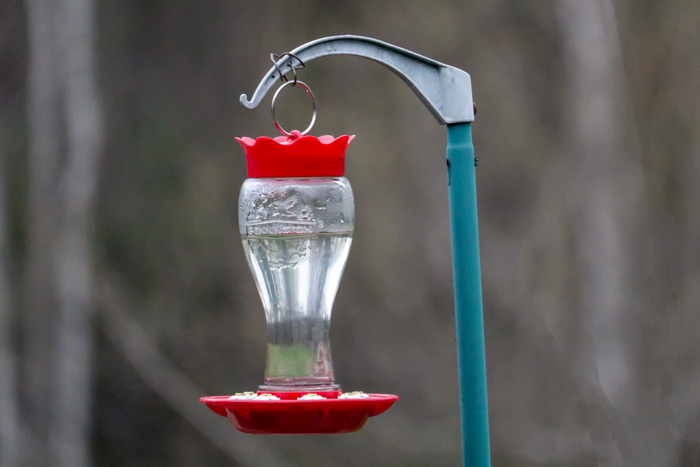
A Pennington Glass Hummingbird Feeder hanging in the backyard.
I always set the feeders up outside empty a few days before I think the hummingbirds are going to arrive. I keep a bird diary, so I try to estimate when they will make their appearance. The males will show up first and then a couple of days later the females follow. The same thing happens every year, the male will let me know he is here by coming to the back window. He sort of hovers a bit and then I know it is time to make the hummingbird nectar. It is really simple to make and I would not recommend using the red nectar you can purchase from the store. It contains dyes and chemicals and is probably the furthest thing from nature you can provide for these little guys. It only takes a few minutes to make it yourself and the unused portion can be stored in the fridge for up to a week. As the season progresses, I will make double batches. The nectar will go rancid in hotter temperatures, so it needs to be changed more frequently.
I was recently contacted by Graham Kinsman of Kinsman Company located in Pipersville, Pennsylvania. Graham had very kind words to say about my photography as well as the blog and kindly gifted me with a Hum Button for feeding my hummingbirds. This is a handheld single feeder designed to attract hummingbirds to feed from your hand.
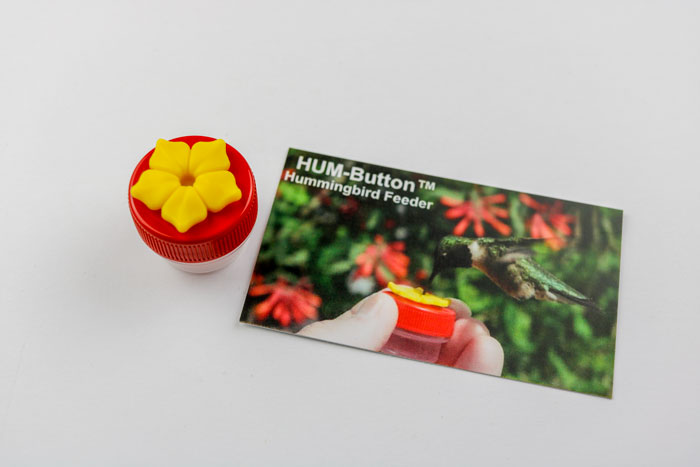
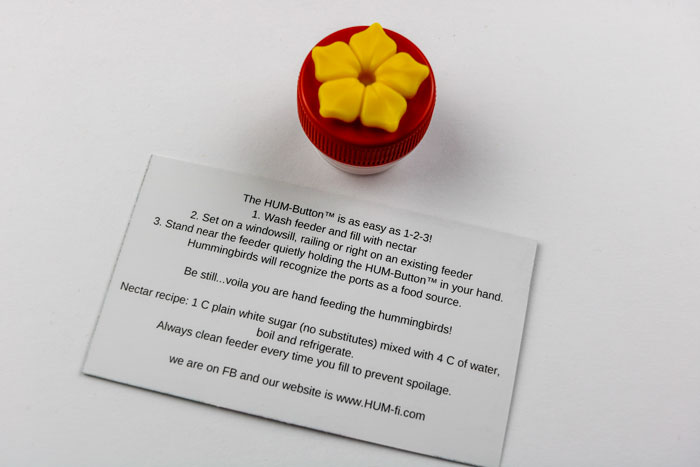
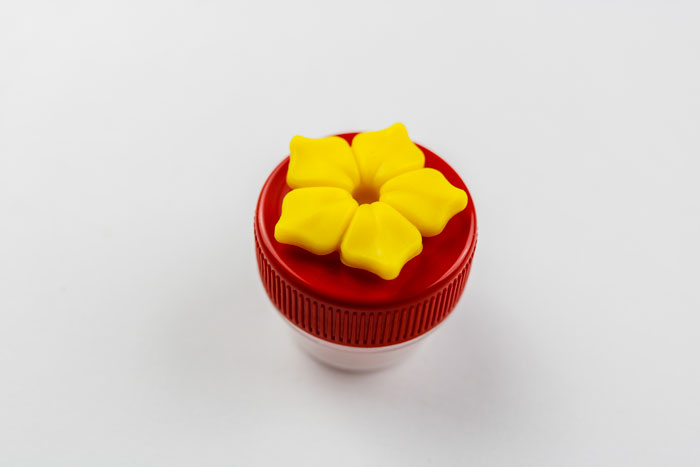
The Kinsman Company carries a wide variety of gardening products that allows their customers to gain an appreciation and connection to the natural world. I invite you to check out their website. I’m excited to see what I can find to make more additions to my yard and help nature thrive. Thank you, Graham, in addition to my regular hummingbird feeders, I’m looking forward to hand feeding my ruby throats!
Directions for making hummingbird nectar are as follows:
1. Mix 1 cup of sugar with 4 cups of water and bring to a boil to kill any bacteria or mold present
2. Cover and let cool and then fill your feeders
3. Extra nectar can be stored in the refrigerator
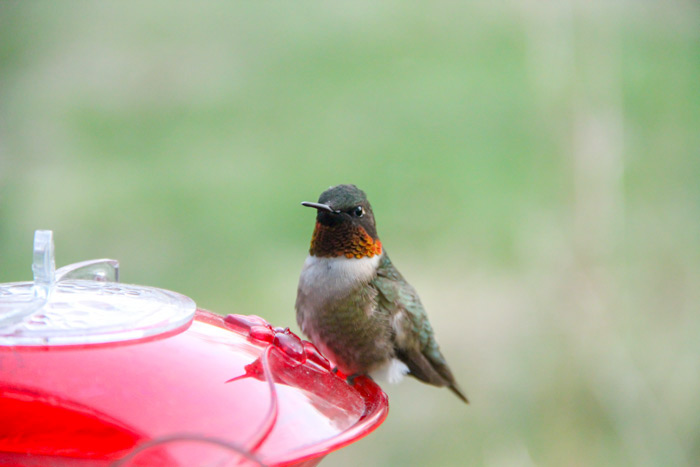
A perching male ruby-throated hummingbird (Archilochus colubris).
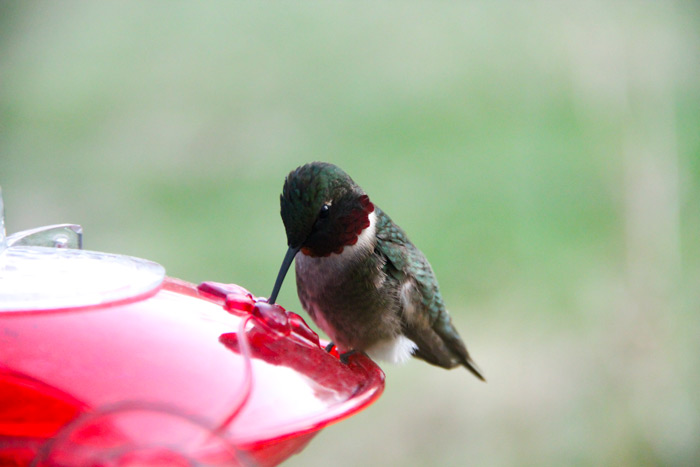
A male ruby-throated hummingbird drinking from the feeder.
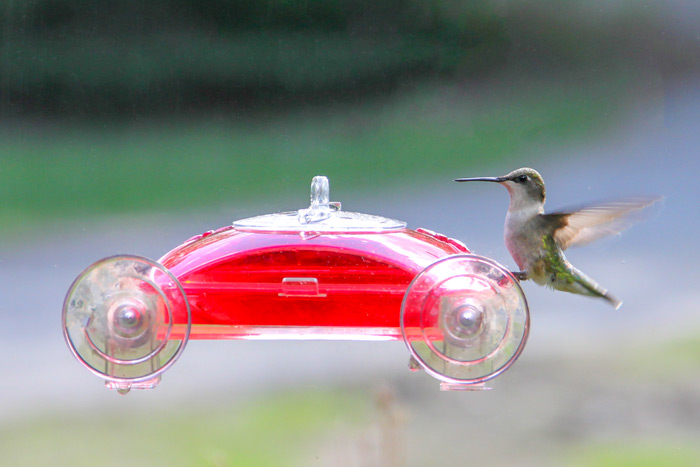
A female ruby-throated hummingbird
Where have all of the hummingbirds gone?
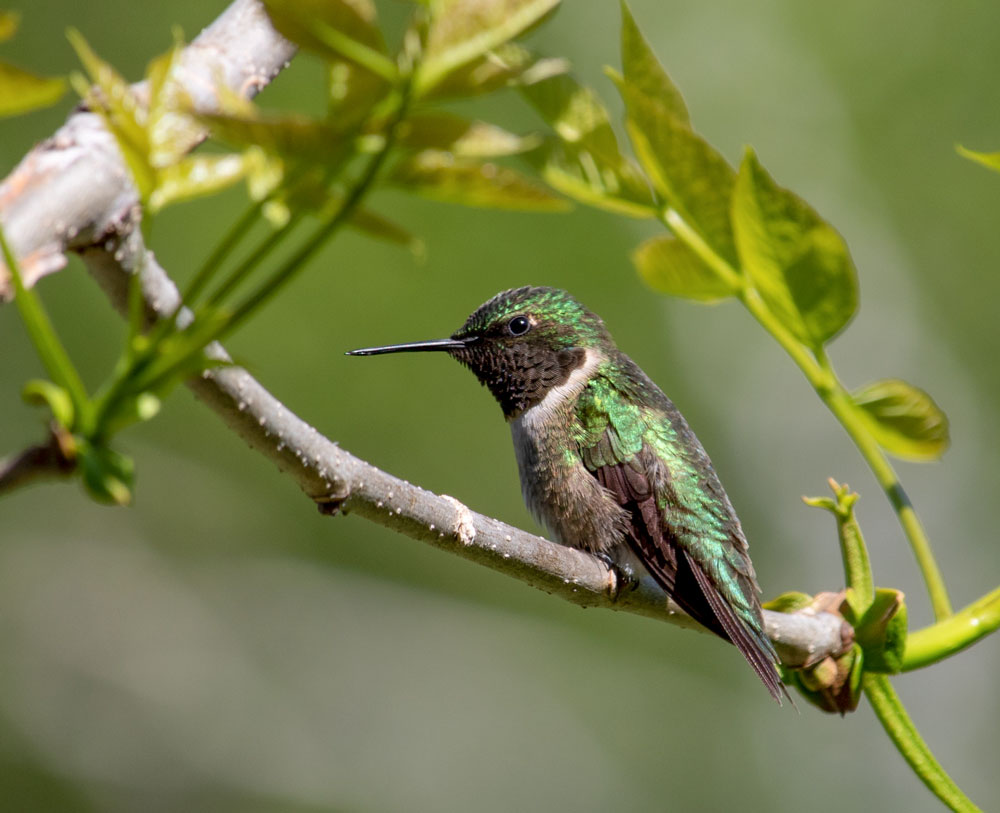
You may have noticed sometime in the spring after the hummingbirds have returned, they seem to disappear for a few weeks. I have often seen individuals asking the questions, where have my hummingbirds gone and why have they disappeared from hummingbird feeders? This could be due to the fact that males are extremely territorial and are trying to establish their territories for the season. It may be beneficial to hang more than one feeder in your yard for this reason. You also have to remember, as the hummingbirds have returned, the insects and flowers have returned as well. These birds are most likely taking advantage of more natural food sources that nature provides. Another reason for the disappearance of the hummingbirds from your feeders could be due to the fact, that their energy has been put toward nesting and caring for offspring. You are not alone and there really is no need to worry and the hummingbirds. Make sure to keep your feeders clean and the nectar changed. They should be back to their regular feeding behavior until the late summer and early fall.
My hummingbird rescue
Here are a couple of photographs I wanted to include in this post from our quick hummingbird rescue when we lived in Connecticut. We had both garage doors open and I was out there doing something. I can’t remember now, but while I was out there a hummingbird flew into the garage. She proceeded to fly into one of the side windows and got herself tangled up in some old spider webs. She fell to the floor and couldn’t fly. I scooped her up and gently untangled her from the spider webs. She took several minutes to recover and then she flew away from my hands.
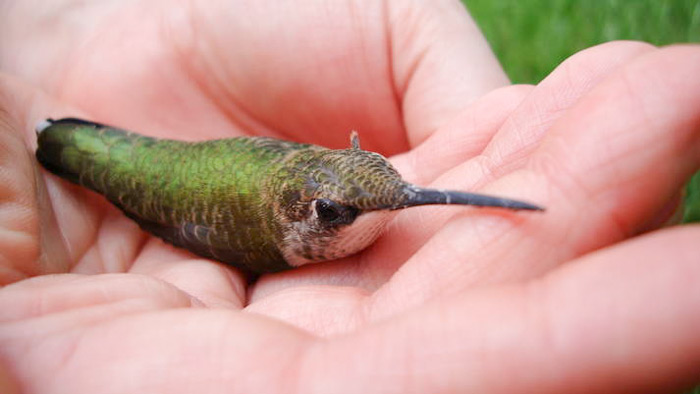
An injured female ruby-throated hummingbird.
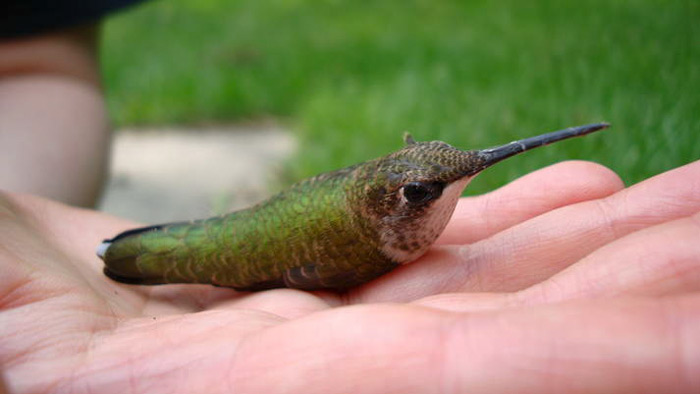
Holding a female ruby-throated hummingbird.
A few days later, I was outside taking photographs of flowers in one of the gardens and I looked up and there was this female Ruby-throated hummingbird hovering right in front of me! I like to think it was the same one from the rescue and she was saying a quick “thank you,” she flew off and that was that.
I found this great interactive hummingbird migration map if you are curious about when you will see these little charmers in your neck of the woods!
Leave a Reply